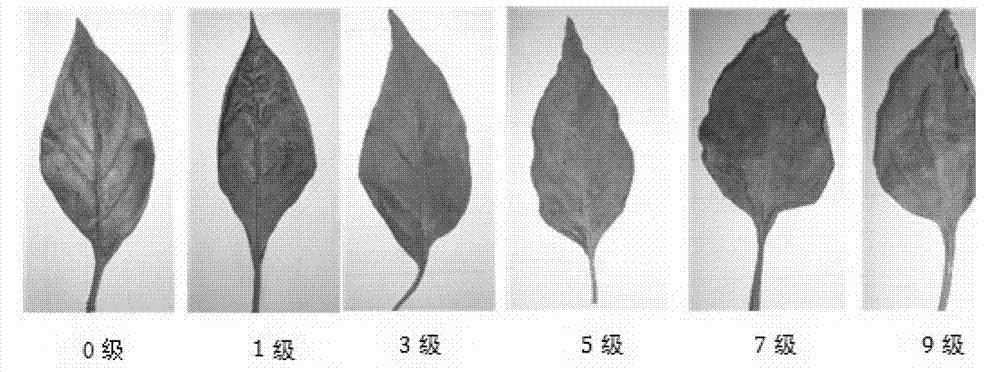Method for identifying chilli heat resistance by using detached leaves
A technology of detached leaves and heat resistance, applied in the field of vegetable breeding, can solve the problems of great influence of field identification environmental conditions, poor reproducibility of results, difficulty in large batches, etc., and achieve identification results that are consistent and repeatable with field natural identification results Good performance, improve the effect of the process
- Summary
- Abstract
- Description
- Claims
- Application Information
AI Technical Summary
Problems solved by technology
Method used
Image
Examples
Embodiment 1
[0035] 1. The heat-resistant pepper strain B35 was used as the heat-resistant control, and the heat-labile pepper strain B6 was used as the heat-sensitive control (Wei Zhu, Minghui Lu, Zhenhui Gong, and Rugang Chen. Cloning and Expression under Heat Stress of A Small Heat Shock Protein Gene CaHSP24 from Pepper[J].African Journal of Biotechnology,2011,10(25):4968-4976), the pepper strains used for detection were MC4, MITO LEE SELN-1 and 83-2018-2 (all cited from Asian Vegetables Development Research Center).
[0036] 2. Soak the seeds of capsicum material whose heat resistance is unknown, as well as the seeds of the heat-resistant control and the heat-sensitive control, respectively in warm water at 55°C for 20 minutes, soak in clear water for 5 hours, and accelerate germination in an artificial climate box at 28°C in total darkness; after 4 days Seeds are white, sown in plugs. Then culture them under the condition of 25℃~30℃ / 18℃, 16h / 8h, relative humidity 50%~70%, light 3000~...
Embodiment 2
[0055] 1. The heat-resistant pepper strain B35 was used as the heat-resistant control, and the heat-labile pepper strain B6 was used as the heat-sensitive control (Wei Zhu, Minghui Lu, Zhenhui Gong, and Rugang Chen. Cloning and Expression under Heat Stress of A Small Heat Shock Protein Gene CaHSP24 from Pepper[J].African Journal of Biotechnology,2011,10(25):4968-4976), the pepper strains used for detection are Marshal Huang No. 2 selection, Meiyu selection, Baozijiao and Early Calwonder (referred to as EC) (both materials are well-known in the art, provided by the applicant's inventor's research group).
[0056] 2. Soak the seeds of capsicum material whose heat resistance is unknown, as well as the seeds of the heat-resistant control and the heat-sensitive control, respectively in warm water at 55°C for 20 minutes, soak in clear water for 5 hours, and accelerate germination in an artificial climate box at 28°C in total darkness; after 4 days Seeds are white, sown in plugs. Th...
PUM
 Login to View More
Login to View More Abstract
Description
Claims
Application Information
 Login to View More
Login to View More - R&D
- Intellectual Property
- Life Sciences
- Materials
- Tech Scout
- Unparalleled Data Quality
- Higher Quality Content
- 60% Fewer Hallucinations
Browse by: Latest US Patents, China's latest patents, Technical Efficacy Thesaurus, Application Domain, Technology Topic, Popular Technical Reports.
© 2025 PatSnap. All rights reserved.Legal|Privacy policy|Modern Slavery Act Transparency Statement|Sitemap|About US| Contact US: help@patsnap.com

